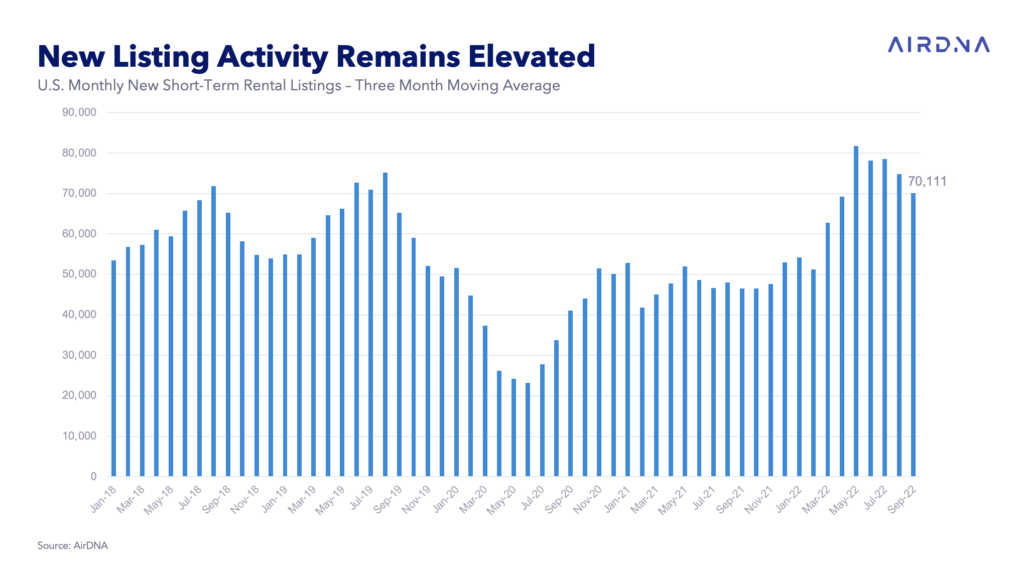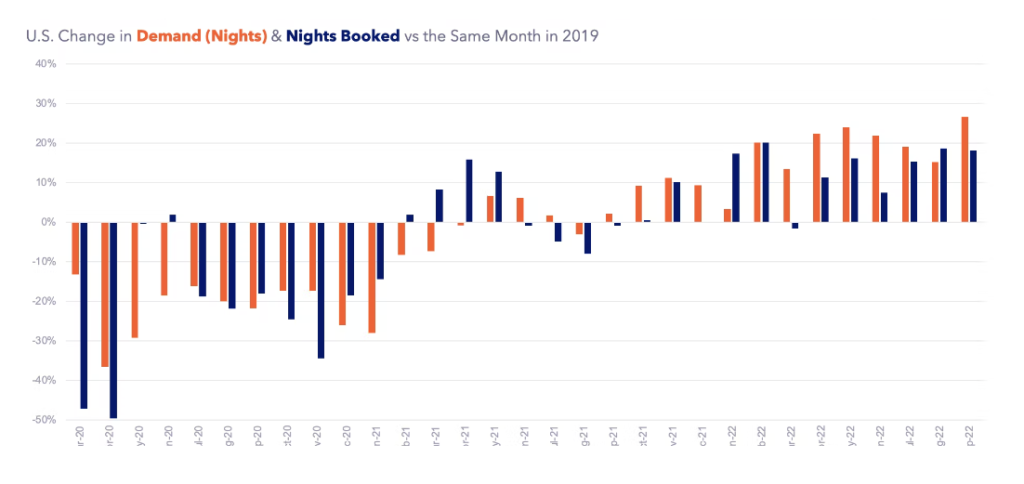Your response to the #AirbnBUST
Since the Summer of 2022 Airbnb hosts have been increasingly using the #AirbnBust hashtag on social media complaining about a drop in bookings, especially as the holiday season approaches. But is this even a real thing, what do the numbers say and what can you do?
Short-term rental (STR) investors are asking questions like:
- 1. Are the occupancy rates declining in my market?
- 2. Are there too many new Airbnb properties on the market?
- 3. Are the bookings on Airbnb, VRBO, and “co” declining?
- 4. How do I manage my rental property?
- 5. How do I host my Airbnb to increase my revenue?
- 6. What STR management style is right for me and which tools should I use? What is Airbnb doing to respond to the Airbnb bust?
Yes, it is true that the occupancy rates are declining, while the number of properties on Airbnb is increasing, but so is the demand. So let us take a closer look at the numbers, understand the bigger picture, and analyze what you can do.
Cracking the Numbers
According to rental analytics firm AirDNA, the number of available short-term rental listings in the U.S. skyrocketed to 1.38 million in September 2022. That is a 23.2% year-over-year increase. And hosts complaining about lower bookings were right – the occupancy rates have indeed been declining from May through September 2022 – 6.2% year over year.
But the demand and average daily rates are still increasing too.
Average daily rates (ADRs) in September 2022 continued to follow the trend of the summer months, growing 5.6% year over year and accelerating from the 2.7% year-over-year gains seen in August.
At the same time, Airbnb reported that Q3 2022 was their most successful quarter ever – revenue of $2.9 billion (highest quarter ever), net income of $1.2 billion (most profitable quarter ever), and $960 million in free cash flow (highest Q3 ever).
So, What Is Happening?
In order to understand the big picture, you need to consider several key factors like post-covid travel and inflation.
Most Airbnb hosts using #AirbnBust hashtags, when investing in their short-term rental properties and determining their average daily rate (ADR) have only taken into account data generated in 2021 or even only in 2022. This is obviously not enough, as 2021 was a bumper year for short-term rentals in the U.S, largely due to a spike in demand after the lockdown. Since then, supply was continuously increasing in order to catch up to the demand.
As outlined earlier, the occupancy rates from May through September 2022 might have been declining compared to the year before, but they have actually increased 9.5% compared to 2019 – which remains the most salient comparison period for 2022 due to the pandemic.
Additionally, it is no secret that the inflation rate in the U.S has increased in 2022 compared to 2021 which is also a key factor to consider, especially when determining the average daily rate of your STR. For example, in October 2022 we have seen a price increase of 7.7% compared to October 2021.
While these still record highs since the early 1980s, there is also good news. The annual inflation rate in October is down from June’s 9.1% pandemic-era peak and September’s 8.2%. And according to IMF, the projected 2023 inflation rate is currently at 2.86%.
What Can You Do?
Now that you understand the numbers a bit better, the question is not if #AirbnBust is actually happening, but how do you make sure you stay competitive and ensure that you have a great Airbnb listing?
You should consider multiple key points in order to stay competitive: listing set up, great communication, automation, and pricing.
Make sure your listing has a high-converting title and SEO-friendly description. As the competition is increasing, you have to make sure that you stand out in both the Airbnb algorithm and to the guest.
Your photos should be inviting, showing your property amenities in a great resolution, and good lighting conditions. This helps manage the expectations of the guest as well and ensures receiving great ratings.
Good guest communication is another key factor that contributes to the overall guest experience and the rating of your listing.
Top 100 Airbnb Rental Markets

Instantly compare the top 100 short-term (Airbnb) rental markets in the US
Creating templates and automation will help you get 5-star reviews, but also save you a lot of time. Reservation reminders, house rules, and entry instructions, touching base with the guests during their stay, and checkout instructions – having this automated and executed well can play a crucial role.
Finally, having dynamic and competitive prices is imperative if you want to avoid the #AirbnBust. While most marketplaces like Airbnb have their own pricing recommendations, they often favor the marketplace instead of the host.
There are several tools that you should be using to help you better manage your STR, like access to updated market reports, property management systems, smart pricing tools, and automation. But navigating through all of this can be time-consuming and overwhelming.
STR professionals understand the market trends, continuously analyze the changes happening on Airbnb, and always consider key factors before making informed decisions.
GetChalet Inc. does not provide tax advice and therefore cannot advise investors on the applicability of tax law. If you are considering depreciation strategies, you should consult with your tax advisor.




